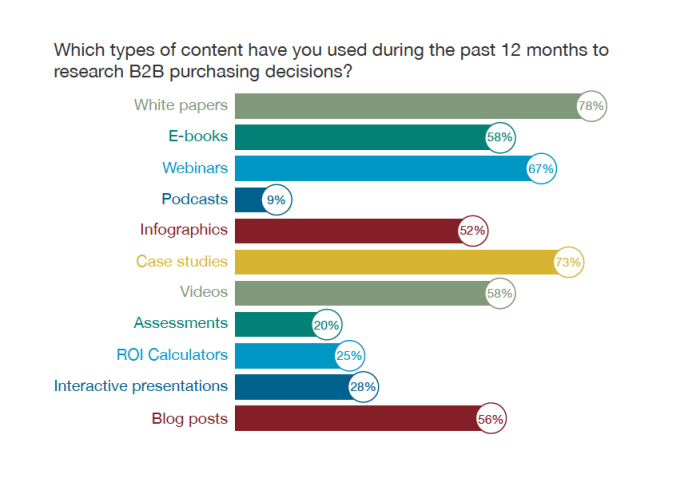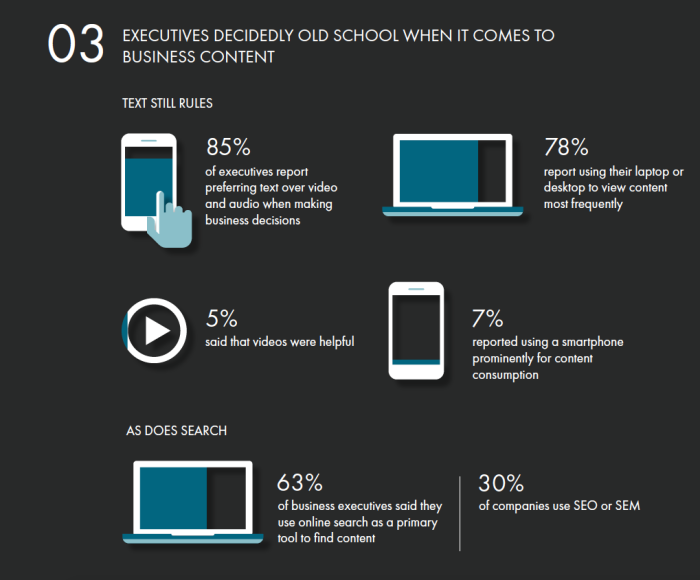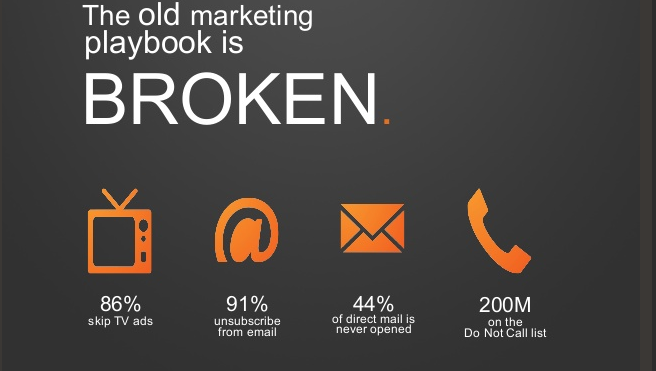Content Marketing ist derzeit in aller Munde. Also in den Mündern der Marketiers. Die potentiellen Kunden sollen (und wollen?) durch tolle Inhalte überzeugt werden. Falk Hedemann bezeichnet den Begriff als schwammig und vermutet, dass eine neue Sau durchs Dorf getrieben wird. Ich bin da nicht ganz dabei, sondern denke, dass gute Inhalte auf jeden Fall wichtig sind. Doch natürlich gibt es aus meiner Sicht Kriterien für und Herausforderungen an “gute Inhalte”.
Inhalte sind heute sicher multimedial. Nicht nur die jüngeren Generationen konsumieren ihre Informationen immer mehr über Video. Ich persönlich bin nicht ein so großer Freund von Videos, da ich selten den Kopfhörer im Ohr habe, auf Reisen meine Nachbaren nicht nerven will und bei der Nutzung des “Second Screens” den Ton natürlich nicht andrehen kann, während die Glotze läuft (natürlich nur Nachrichten oder – ich gestehe – Fussball). Auch ich habe in den vergangenen Jahren immer mehr Videos produziert oder produzieren lassen. Jedoch muss man hier unbedingt die Zugriffszahlen denen textueller Informationen gegenüberstellen, um dann je nach Zielgruppe zu entscheiden, ob sich Videos und der damit verbundene Aufwand lohnt.
Audio, sprich vor allem Podcasts, sind wohl auf dem absteigenden Ast, obwohl sie eigentlich viel Sinn machen könnten. Während der Fahrt im Auto zur Arbeit mal schnell einen Podcast hören. Klingt logisch, aber ich hatte dann nie den richtigen Podcast runtergeladen und während des Fahrens war mir es mir zu aufwändig, am Smart Phone herum zu hantieren. Man soll sich ja auf die Strasse konzentrieren. Und ich habe bei mir persönlich das Phänomen beobachtet, dass ich schnell einmal abgelenkt bin und den Podcast-Faden verloren habe. Also zurückspulen und wieder hören? Macht man dann doch nicht.
Egal aber ob Video, Podcast oder geschriebener Text. Ich glaube fest daran, dass die Inhalte qualitativ hochwertig und interessant aufbereitet sein müssen. Bevor ich wieder schwammig werde, einige Kriterien dazu: Korrekte Rechtschreibung und Interpunktion sind für mich ein Muss, gerade auch wo ich hier im Blog öfters mal mit Typos rumschlure. Für mich ist immer wieder erschreckend, wie Stil mit “ie” geschrieben wird oder der erweiterte Infinitiv kein Komma bekommt.
Korrekte Rechtschreibung ist Pflicht, gute geschriebene Texte sind die Kür. Ich gehe nicht so weit, dass Schreiben eine Wissenschaft ist, aber es gibt hilfreiche Tipps und Tricks, wie man Texte aufbereiten sollte, von Ludwig Reiners bis Wolf Schneider. Es gibt beispielsweise journalistische Regeln, wie ein erster Absatz aussehen sollte, oder dass man besser aktiv schreibt, sprich Verben verwendet. Man kann Texten auch trainieren, sprich “gelernte” Kollegen gegenlesen lassen und so die eigenen Fähigkeiten weiter entwickeln.
Warum reite ich derart auf dem Thema herum? Viele Texte in der IT-Branche sind sehr verbesserungswürdig, gerade solche, die aus einer Übersetzung originär englischer Quellen stammen. Das aus dem Englischen übersetzte White Paper ist nur zu oft eine Lesekatastrophe. Der Beitrag von Julia McCoy auf Social Media Today bringt es auf den Punkt. Viel zu viele beschissene Inhalte werden heutzutage produziert. Deshalb plädiere ich wie auch Christian Henne und andere dafür, professionelle Schreiber und Texter zu beschäftigen und die eigenen Mitarbeiter, die hoffentlich bloggen oder in Foren unterwegs sind, zu trainieren. Nur wer das tut, wird auf Dauer Texte produzieren, die Empfänger auch interessieren.
Tja, und dann kommt noch das böse Wort “Story Telling” ins Spiel: Geschichten erzählen. Ich bin ein Freund davon, wenn die Geschichten persönlich, authentisch und interessant sind. Geschichten wird übrigens keiner erzählen können, der nicht auch raus geht zum Kunden, real oder über die digitalen Kanäle. Geschichten, persönliche Erfahrungen oder auch Erfahrungen anderer (Referenzen …) sind die Dinge, die wohl Leser am meisten interessieren – und beeinflussen. Übrigens kann auch hier ein Texter durchaus coachen und helfen, solche Geschichten zu entdecken und aufzubereiten. Und das, was ich hier für Texte schreibe, gilt natürlich auch für das Erstellen von Video- und Audioinhalten.
Bei all dem müssen wir im Blick behalten, dass die Aufmerksamkeit unserer “Empfänger” wichtig ist – und die Aufmerksamkeitsdauer immer kürzer zu werden scheint. Jennifer Beck von Gartner sagte am Dienstag auf einer Konferenz, dass Leser heute maximal 8 Minuten einem Thema Aufmerksamkeit schenken. Ein TEDTalk dauert nicht umsonst maximal 20 Minuten. Und man hat wohl nach aktuellen Studien nur 8 Sekunden Zeit, um die Aufmerksamkeit erst einmal zu bekommen. Sprich, gute Überschriften – eben nicht nur für Google geschrieben -, die richtigen Schlüsselwörter und ein interessantes Bild entscheiden, ob ein Surfer weiter liest.
Doch das sind für mich alles genau Gründe dafür, qualitativ hochwertige Inhalte zu erstellen und eben möglichst nicht in leider oft gewohnte und von Gunnar Sohn beschriebene Phraseologie der Werbebotschaften und Unternehmenskommunikation zu verfallen. Welche Arten von Inhalten konsumieren denn Interessenten gerade im B2B-Bereich, der mich in meinem Job logischerweise vor allem interessiert. Hier einige Ergebnisse gemäss des Demand Gen Report, 2014 B2B Content Preferences Surveys:

© 2014 B2B Content Preferences Survey
White Paper und Referenzberichte liegen mit Webinaren noch immer an der Spitze. Übrigens fast alles längere Informationshappen, die auch längere Aufmerksamkeit brauchen. Jedoch scheinen sich die Präferenzen über die Jahre hinweg hin zu interaktiven, multimedialen, kürzeren Inhalten zu bewegen, so die Studie. Die oben abgebildete Grafik zeigt nur an, welche Quellen benutzt wurden. Am höchsten geschätzt werden jedoch Empfehlungen von anderen Kunden, sogenannte “Peer Referrals”. Die Autoren der Studie empfehlen daneben, verstärkt auf interaktive Inhalte und mobile Konsumier-/Lesbarkeit zu setzen.
Mein Fokus wäre ein anderer: Qualität und Personen. Ich bin davon überzeugt, dass wir mehr qualitativ hochwertige von Experten geschriebene Inhalte brauchen. Offiziös generiertes Marketinggewäsch haben wir genug. Jedoch fehlt es oft an Praxisberichten, konkreten Erfahrungen und Personen, die für und hinter einem Thema stehen. Solche “Subject Matter Experts” reichen von den Mitarbeitern im eigenen Hause über Geschäftspartner bis zu Kunden. Die Plattformen, wo sich solche Experten artikulieren können und sollten, sind Communities zum Spezialgebiet oder auch Blogs. Beides mit Leben zu erfüllen, ist sicher keine einfache Aufgabe, braucht eventuell einen Community Manager oder einen Redaktionsplan für einen Blog.
Ein Blog auf der Unternehmenswebseite war übrigens auch eine der Top-Empfehlungen der oben schon erwähnten Jennifer Beck von Gartner. Dass ein solcher Blog – und ich habe bewusst nicht Corporate Blog geschrieben – nicht einfach zum Leben zu erwecken ist, kann ich aus eigener Erfahrung bestätigen. Dass sich aber Bloggen unter vielerlei Gesichtspunkten lohnt, hat beispielsweise Klaus Eck gut zusammengefasst. Die Hürden für einen erfolgreichen Unternehmensblog sind aber durchaus hoch. Viel zu oft degenerieren sie zu einer Plattform, auf der maximal die Marketing- und Werbebotschaften wiederholt werden, die eh schon auf der Webseite des Unternehmens stehen. Das ist aber genau das, was Leser nicht wollen. Im Blog sollten nicht die eigenen Produkte und das eigene Unternehmen im Vordergrund stehen, sondern der vermeintliche Nutzen für die Leser. Ein guter Unternehmensblog dreht sich deshalb nicht um das eigene Unternehmen, wohl aber in sachlicher und fachlicher Tiefe um die Themen, mit denen sich ein Unternehmen beschäftigt.
Ich bin besonders im Unternehmensumfeld ein Freund von Gruppenblogs, Blogs, auf denen mehrere Autoren zu einem Thema aktiv sind. Das nimmt einen grossen Teil der zeitlichen und auch emotionalen Last von den Schultern der Autoren. Trotzdem muss man den Autoren die Zeit einräumen, Artikel zu schreiben, und ihnen anbieten, sie zu coachen. Nur dann gewinnt man sie als Schreiber. Übrigens sind gerade besagte “Subject Matter Experts” sehr sensibel gegenüber “Marketingsprech”. Sie wollen sich nicht vom Marketing einspannen lassen. Sie wollen als hehre Experten da stehen. Und ich sage … gut so, auch wenn mich mancher Kollege jetzt mit faulen Tomaten bewerfen wird. Und pssttt, liebe Marketingkollegen: Sie werden doch über die Themen schreiben, die das eigene Unternehmen treiben, hier und da Produkte erwähnen und draussen zeigen, wie kompetent unsere Firma zu dem Thema ist.
Natürlich ist es nicht damit getan, nur qualitativ hochwertige Inhalte zu erstellen. Die da draussen müssen auch von den Inhalten erfahren, über Google-Suche, Tweets, Facebook, E-Mail-Newsletter, Xing- oder LinkedIn-Gruppen und all die schönen Mechanismen, Inhalte zu verbreiten. Mein Freund Jörg Allmann hat mich einmal als Marketingzentrifuge bezeichnet, weil ich (natürlich) Inhalte über Tools wie Hootsuite auf Google+, Facebook, Twitter, und dort über verschiedene Konten verteile. Oft ist der Text auch identisch – die 140 Zeichen, die mir Twitter als limitierender sozialer Kanal gibt -, obwohl der Inhalt eigentlich dem jeweiligen sozialen Kanal angepasst werden müsste. Aber bleiben wir auch realistisch: Wer hat dafür die Zeit?
Ich scheue mich nicht, mir wichtige, meiner Ansicht nach gute Inhalte aktiv über diese Kanäle zu verteilen und promoten. Beim Verteilen von reinen Werbe-, Veranstaltungs- und Produktpromotions habe ich dagegen ein Problem. Diese Forderung tragen natürlich die Produktverantwortlichen an einem heran, doch ich versuche solche Nachrichten weitestgehend zu vermeiden und sie nur über die offiziellen Social Media-Kanäle zu streuen. Zu viel Werbung macht nicht nur einen Blog, sondern auch eine Person im Netz unglaubwürdig. Aber das ist schon fast ein Thema für einen eigenen Beitrag, was man als Vertreter eines Unternehmens und gleichzeitig Experte in sozialen Medien tun und lassen sollte.
Was ist also mein (vorläufiges) Resumé zu Content Marketing:
- Video hin, interaktive Inhalte her, die Qualität der Inhalte zählt. Deshalb brauchen gute Inhalte gute Autoren, die wissen, wie man schreibt.
- Authenzität zählt: Wenn Experten aus dem eigenen Unternehmen bloggen, ist das extrem wertvoll. Man muss ihnen aber die Zeit dafür geben, sie coachen und auch belohnen.
- Unternehmensblogs sind nur dann sinnvoll, wenn ein verbindlicher Redaktionsplan mit Autoren (siehe oben) dahinter steht und kein Unternehmensgewäsch abgesondert wird.
- Nur Inhalte generieren reicht nicht. Dahinter muss ein Plan und Konzept stehen, diese Inhalte an die Öffentlichkeit zu bringen, sie zu verteilen.
Das also ein erster Wurf zum Thema Content Marketing. Da gibt und gäbe es noch eine Menge mehr zu schreiben, aber das ist ja auch gut so, Ihre/Eure Anregungen und Kommentare?

Foto von CMSWire – so schön, die muss ich verlinken!
P.S. Ganz anderes Thema, also fast: Die Lösung, wie ich komfortabel Inhalte im Auto per Audio hören kann, fehlt mir noch immer. Odcast vergesse ich runter zu laden, das iPhone steckt in der Mittellehne in der (verborgenen Handy-Schale) und das Multimedia-Gedöns meines Volkswagens ist nicht wirklich State-of-the-art. Tipps & Tricks?
Filed under:
Deutsch Tagged:
Blogging,
Content Marketing,
Digital Marketing,
featured 












